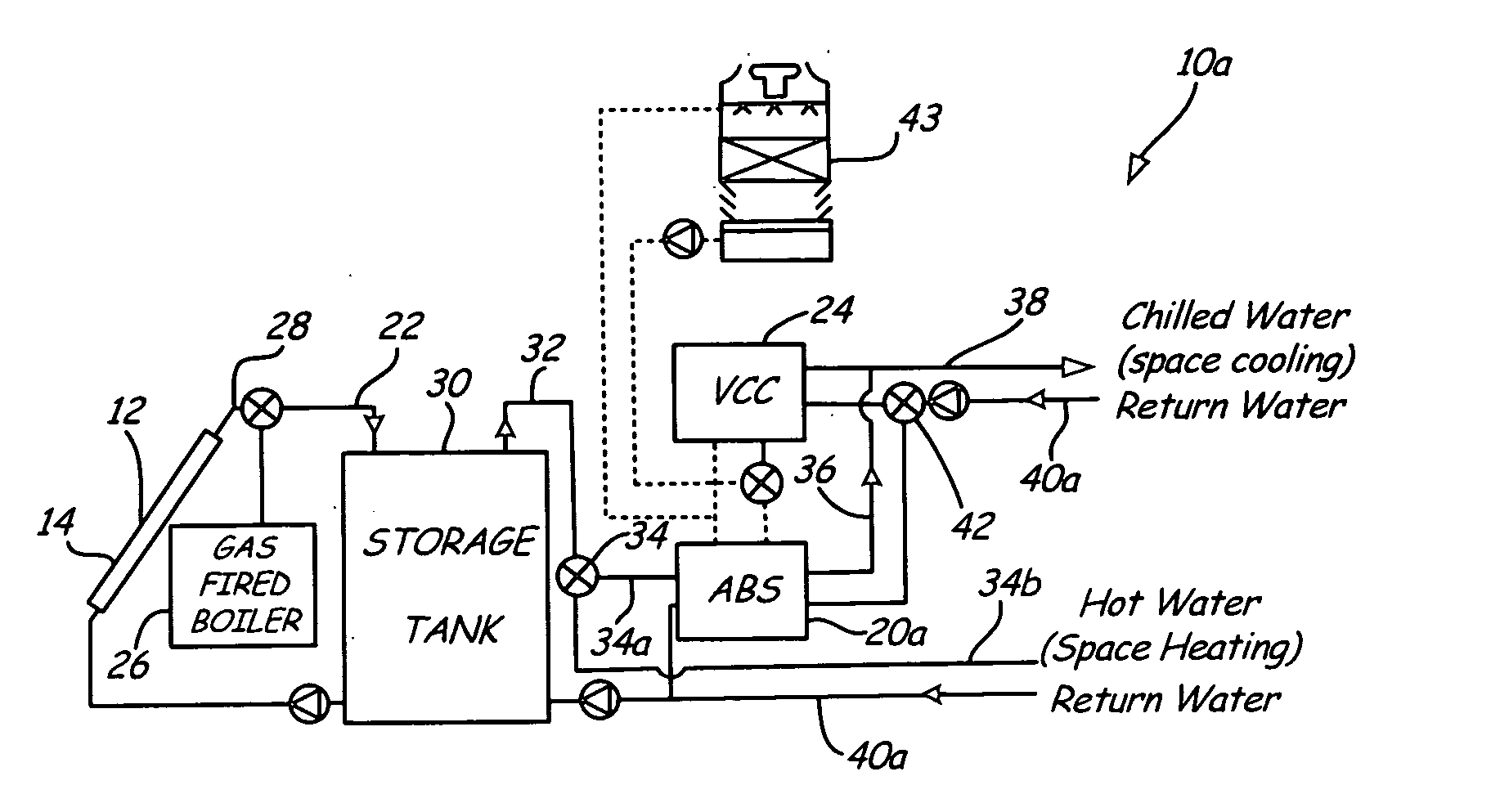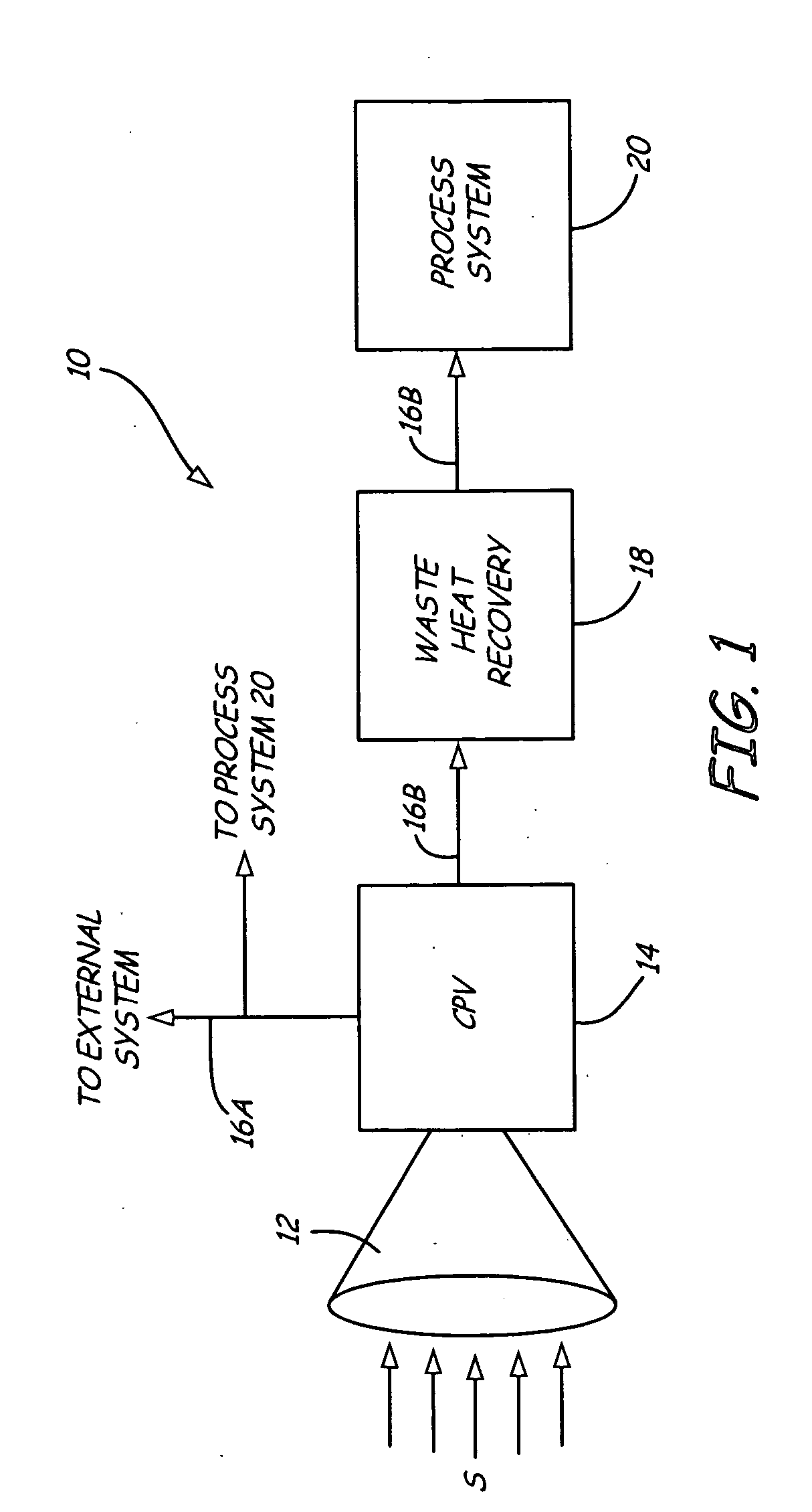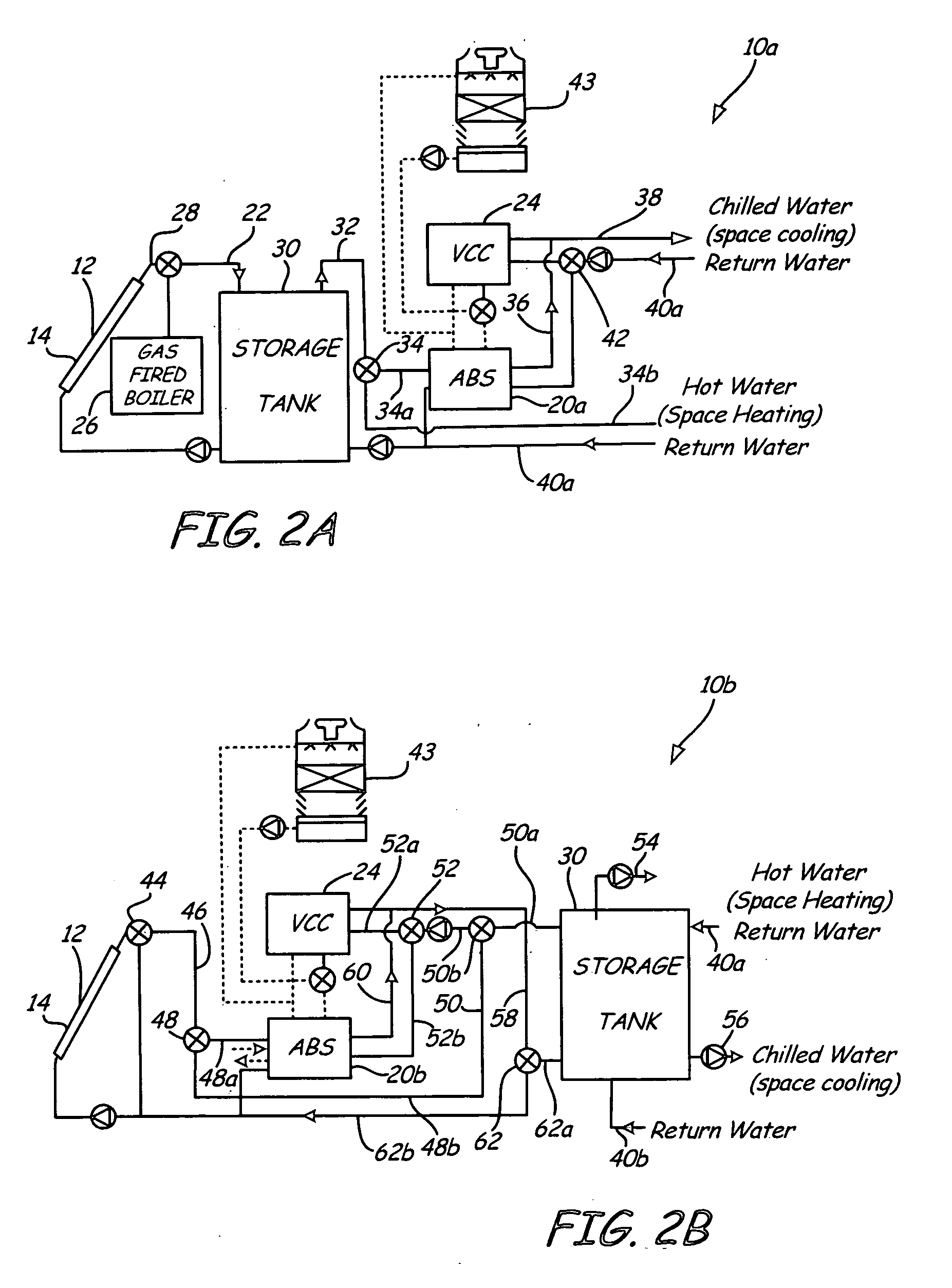Integrated electrical and thermal energy solar cell system
a solar cell and solar cell technology, applied in thermal-pv hybrid energy generation, lighting and heating apparatus, heating types, etc., can solve the problem of more than 60 percent of solar energy captured, in the form of heat, being wasted
- Summary
- Abstract
- Description
- Claims
- Application Information
AI Technical Summary
Benefits of technology
Problems solved by technology
Method used
Image
Examples
Embodiment Construction
[0007]FIG. 1 shows a first embodiment of an integrated electrical and thermal energy solar cell system 10 that generally includes concentrator 12, concentrated photovoltaic cell 14, electrical energy stream 16A, waste heat energy stream 16B, waste heat recover system 18, and process system 20. Process system 20 uses low-grade waste heat 16B generated from cell 14 to provide at least a portion of the energy needed to operate process system 20. Waste heat 16B is collected by waste heat recovery system 18, which transports waste heat 16B to process system 20 for use as thermal energy. Integrated system 10 increases the overall efficiency of concentrated photovoltaic cell 14 and process system 20 by combining the photovoltaic power generated by cell 14 with waste heat recovery. In addition, integrated system 10 produces less pollution by using solar energy as its primary energy source.
[0008] In operation, concentrator 12 is aligned with respect to the sun so that it collects and focuse...
PUM
 Login to View More
Login to View More Abstract
Description
Claims
Application Information
 Login to View More
Login to View More - R&D
- Intellectual Property
- Life Sciences
- Materials
- Tech Scout
- Unparalleled Data Quality
- Higher Quality Content
- 60% Fewer Hallucinations
Browse by: Latest US Patents, China's latest patents, Technical Efficacy Thesaurus, Application Domain, Technology Topic, Popular Technical Reports.
© 2025 PatSnap. All rights reserved.Legal|Privacy policy|Modern Slavery Act Transparency Statement|Sitemap|About US| Contact US: help@patsnap.com



